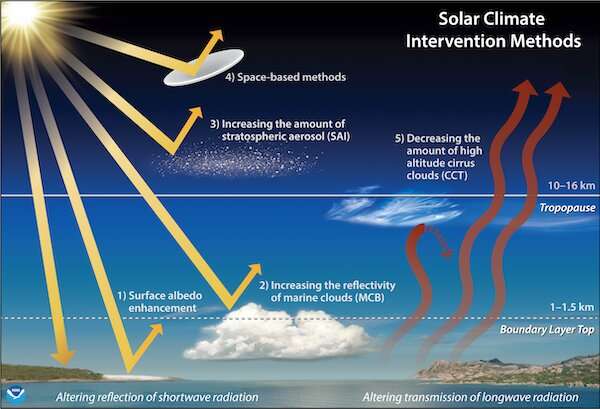Phys.org September 28, 2022
Stratospheric aerosol injection (SAI), the theoretical deployment of particles in the stratosphere to enhance reflection of incoming solar radiation, is one of the strategies to slow, pause, or reverse global warming. SAI is likely be for a specific aim, such as affording time to implement mitigation strategies, lessening extremes, or reducing the odds of reaching a biogeophysical tipping point. A team of researchers in the US (Colorado State University, US Naval War College, RI) used an ensemble climate model experiment that simulated the deployment of SAI in the context of an intermediate greenhouse gas trajectory quantifying the probability that internal climate variability masks the effectiveness of SAI deployment on regional temperatures. They found that while global temperature was stabilized, substantial land areas continued to experience warming. In the SAI scenario they explored, up to 55% of the global population experienced rising temperatures over the decade following SAI deployment and large areas exhibited high probability of extremely hot years. These conditions could cause SAI to be perceived as a failure. Countries with the largest economies experienced some of the largest probabilities of this perceived failure. According to the researchers, potential for perceived failure could therefore have major implications for policy decisions in the years immediately following SAI deployment…read more. Open Access TECHNICAL ARTICLE

Some potential methods limiting the amount of solar energy in the atmosphere. Credit: Chelsea Thompson, NOAA/CIRES.